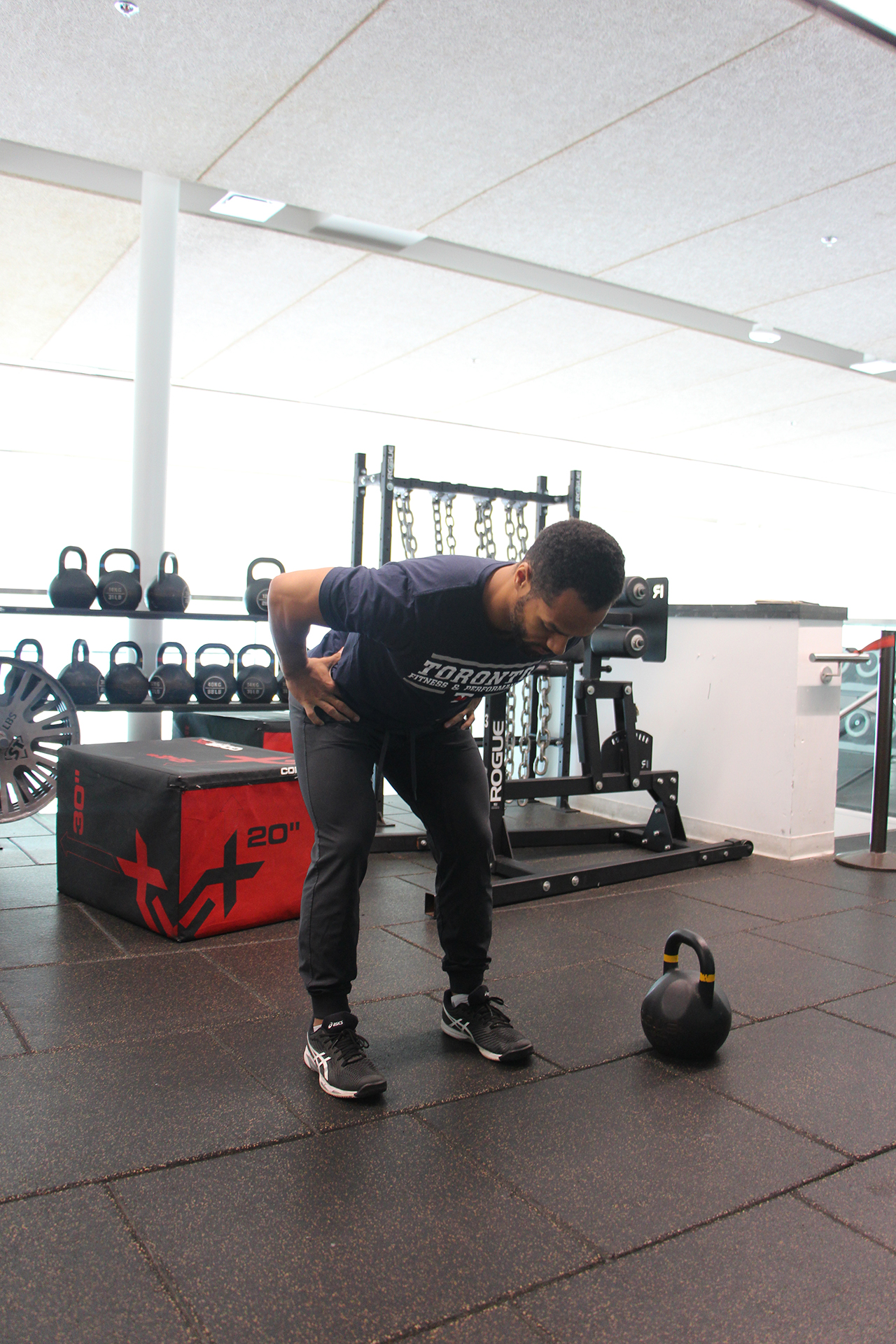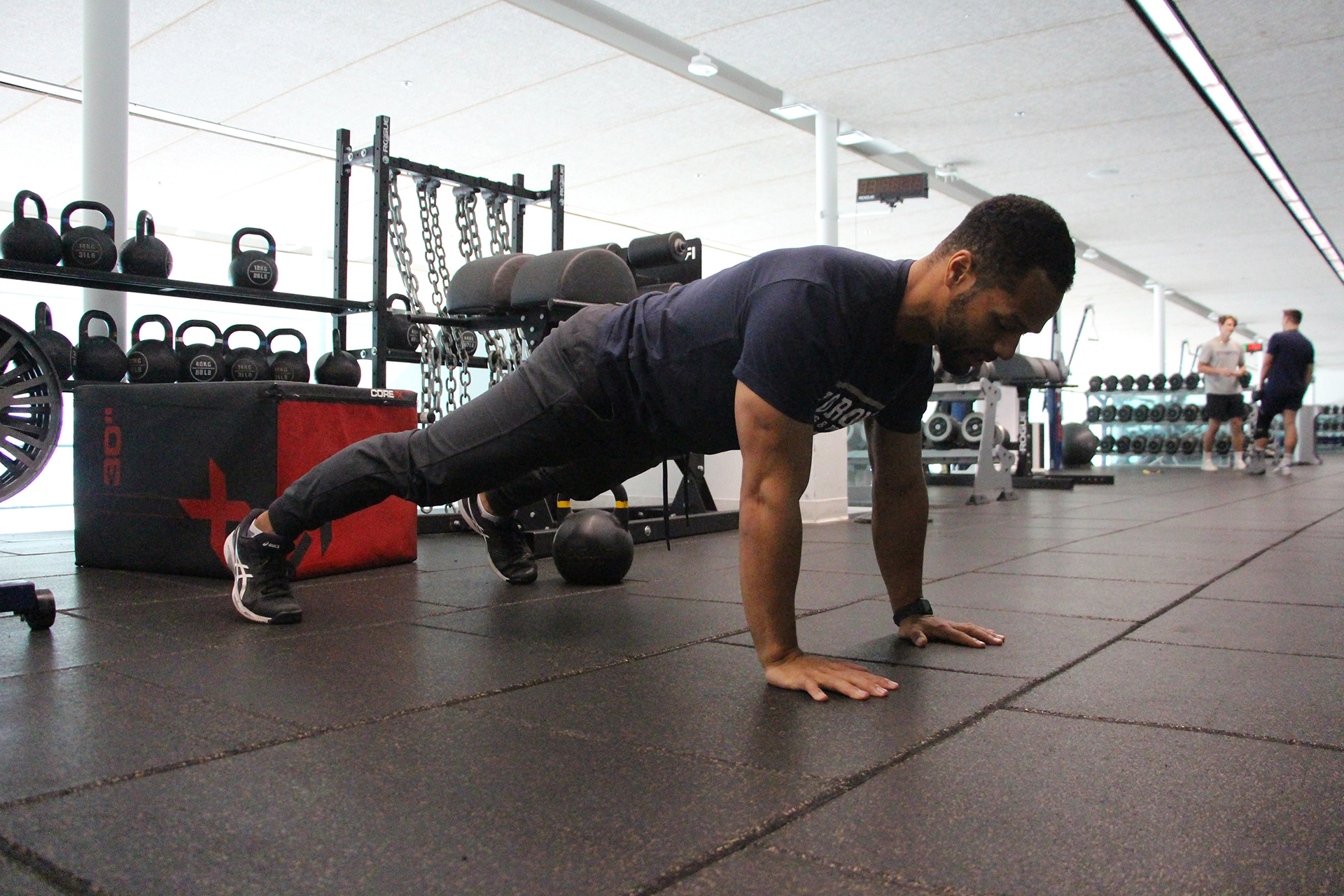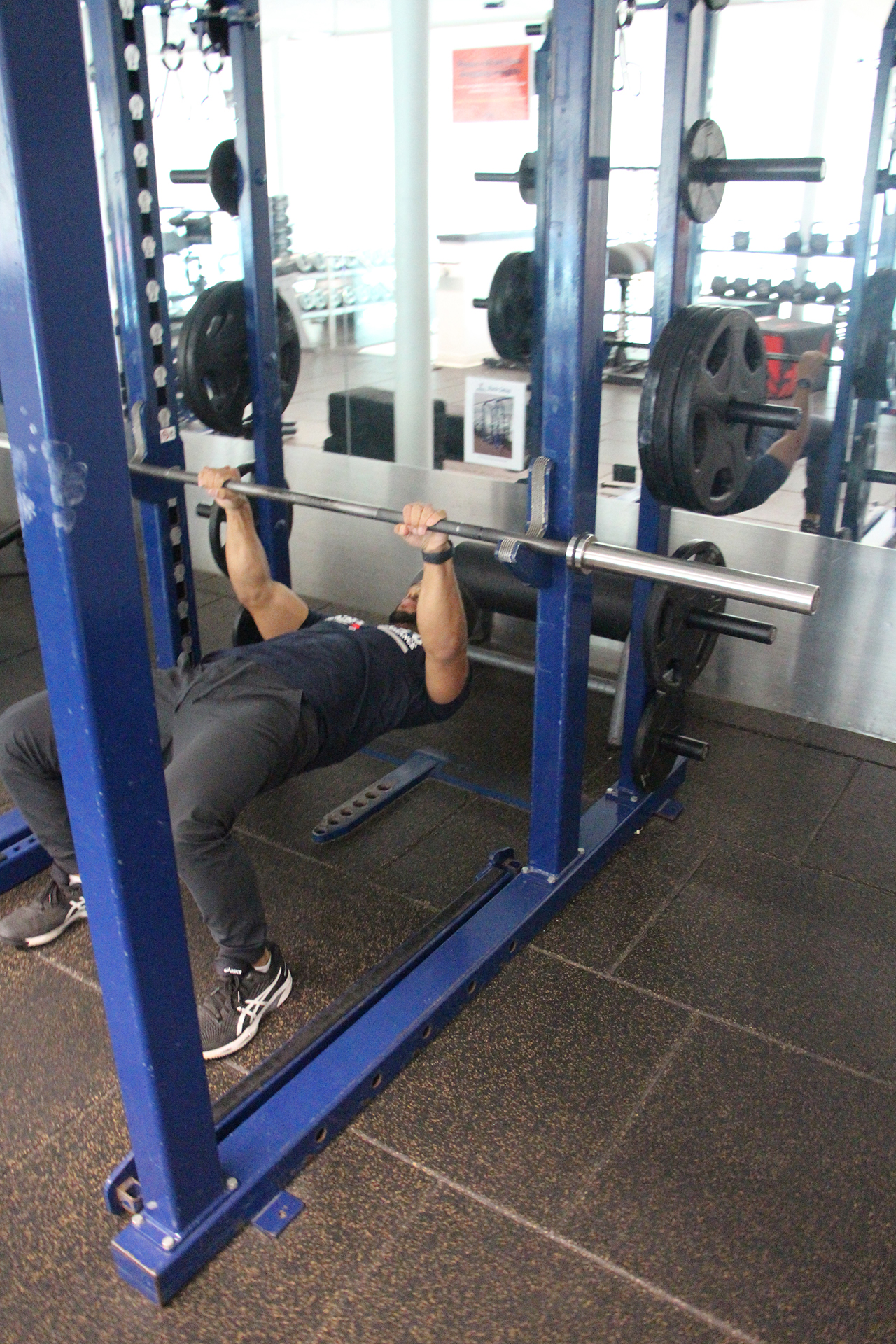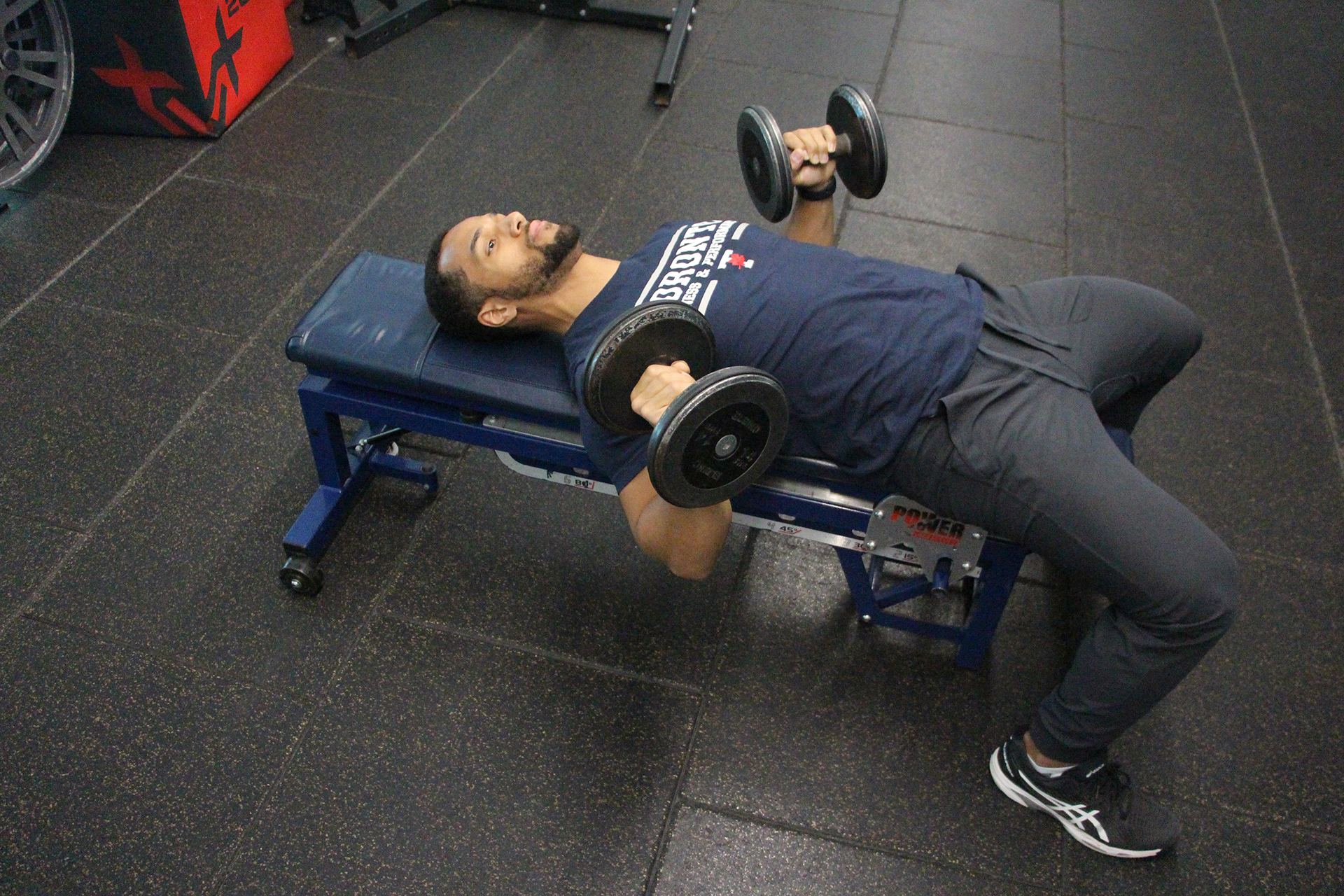Alex Malone, lead coach of the Sport & Recreation fitness and performance program, describes IMPACT as a group fitness program infused with the faculty’s academic research and a big helping of community building. Malone, who completed his undergraduate degree at KPE (and a master’s degree at the University of Waterloo), feels that connection on a personal and professional level.
“The profs who educated me and other staff working here, also work with firefighters, athletes and other individuals who want to move well, in addition to having any performance aspirations,” says Malone. “We're fortunate that we get to incorporate their knowledge into our programming.”
So, what is IMPACT exactly?
“The acronym stands for integrated movement, performance, agility and conditioning team,” explains Malone. “So, the goal is not just to get better at a particular exercise, but to get better at moving.
“Maybe you're going to apply that to playing with your kids or to your next pickup basketball game or, if you’ve had an ACL surgery, for example, to climbing up and down stairs.”
The program, which offers classes to the general, women-only and LGBTQ populations, runs six days a week. Some days are dedicated to traditional strength training with participants working on a certain number of sets and reps and exploring ranges of motion. Another day may expose participants to a mix of more dynamic pieces. That’s the agility portion of IMPACT.
“This is where we’ll add in throws and maybe some jumps and kettlebell swings - things that allow you to move a little bit faster because, if you want to apply the training to a sport, typically, most sports will have a speed component to it,” says Malone.
Another focus is on single arm or leg work to improve stability. Participants get to explore the gym a little bit more, including the Versa Climber, an upright cardio machine that can be used for short sprints, as well as longer slow-paced cardio.
“We prioritize variety, so we’ll flip some of the workouts from week to week,” says Malone. “For example, on Monday, we'll have one set of exercises. On the following Monday, we'll have a similar organization of exercises, but instead of a push, we might work on a pull; instead of a squat, we might work on a hinge. So, even if you only show up on Mondays, you’ll still get to experience a variety of movements and exercises.”
At the same time, there is enough repetition to notice improvements and progress.
“Once we hit that midway point, we adapt the program and focus on the group’s feedback such as increasing the speed or extending the length of the conditioning exercises,” says Malone.
Malone shared some tips on movement principles applied throughout IMPACT, “because if you can learn how to perform a movement, you’ll be able to complete multiple exercises.”
HINGE: To do a hinge, you’re moving primarily through the hips with your feet firmly planted on the ground and your knees unlocked (slightly bent). Once your knees are unlocked, you’re going to push your hips back and move your chest forward, while holding your back flat. Once you feel too much of a stretch, typically through your hamstrings or just behind your thighs, and you feel like you can't go any further without rounding your back, that's going to be your limit, at least for now.

SQUAT: If you sat down today and stood back up, you would have performed a squat, more or less. A squat is a multi-joint hinge movement. You're moving at three key joints - your ankles, knees and hips. If I was just doing a traditional hinge movement, I would primarily be moving through my hips. In a squat, you want to make sure that you’re moving through all three joints, and that whatever direction your toes are pointing, your knees are flowing in the same direction. Adding loads or speed increases the challenge of the movement.

PLANK: For a plank, you don't want your hips to drop too low and you don't want your hips to rise too high. There should be a straight line between your shoulders, hips, knees and ankles. If you want to modify that to kneeling, the same principle applies and you have to keep a straight line between your shoulders, hips and knees. Keep your shoulders down and away from your ears.

INVERTED ROW: When you’re rowing, you’re in a very similar position to a plank. You want to keep the shoulders down and back, and move them in the same plane with your elbows. So, if you’re pulling, your elbows come back and your shoulders pull back, like you’re pulling your shoulder blades together. If you are pushing, your elbows come forward and your shoulder blades pull apart. When you’re in an inverted position, you also want to remember to keep your hips up high. You can do the same movement standing up with a band.

REVERSE LUNGE: The reverse lunge gets you used to working on a single leg. When you’re moving around in the real world, you go from one leg to the other, up or down the stairs, one leg to the other. Here, the same principle applies as with the squat – toes and knees are going in the same direction. (The same rule applies If you’re going into a lateral or a diagonal lunge.) In a reverse lunge, most of your weight is on the leg that's underneath you, compared to the one that's behind you. The weight stays on that one base leg, which is a good introduction to single leg movement – of the kind we experience every day in our lives.

PUSH: A push movement could be a pushup or a dumbbell bench. In a dumbbell bench position, with the two dumbbells, you are pulling the shoulders back and the elbows down as if you were engaging in a pull. Then as you press up, you want your elbow and shoulders to move in the same plane and direction without getting too far up and close to your ears. So, if you’re pressing forward, it means your shoulders and your elbows move forward. The same principle applies when you are in the pushup position, however then you also have to ensure your core is braced, so that your pelvis and shoulders remain the same distance apart, like a plank.

